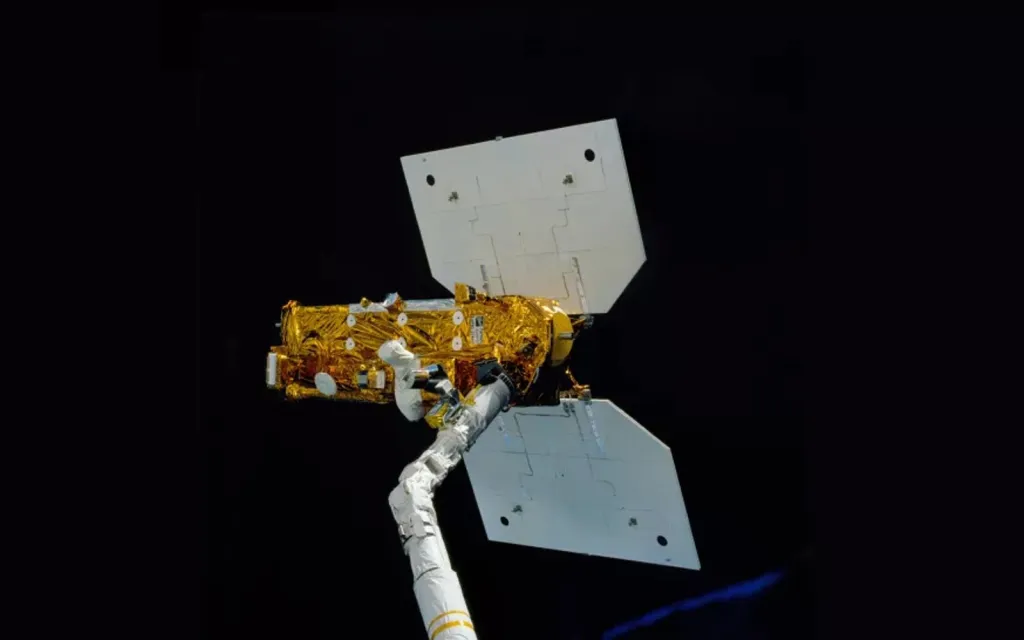On the evening of January 8, 2023, a strange object was observed above the sky in Guyana, Region 9, South America. Although this object was first reported by a resident of Letham in Region 9, it may have been seen in other areas across Guyana and other countries.

The object shone very brightly and seemed to hover or move slightly backwards and forwards. It looked smaller than the moon, but seemed larger than a star.
People were excited and curious to know what this object was. Some said the world was ending and some said Jesus was coming. Others said it was a “sign of the times” and some believed it was an alien spaceship.
In addition, some believed that it was an angel from heaven. The reason for this was that the object appeared to have two wings attached to a body. Also, someone joked that some others are mothers-in-law!.
— Alex Javier (@k76796196) January 13, 2023
One possibility is that it is the dead NASA satellite predicted to crash into Earth’s atmosphere on the evening of January 8, 2023.
NASA’s retired Earth Radiation Budget Satellite (ERBS) reentered Earth’s atmosphere at 11:04 p.m. EST on Sunday, Jan. 8, after almost four decades in space. For 21 of its years in orbit, the ERBS actively investigated how the Earth absorbed and radiated energy from the Sun, and made measurements of stratospheric ozone, water vapor, nitrogen dioxide, and aerosols.
The Department of Defense confirmed that the 5,400-pound satellite reentered the atmosphere over the Bering Sea. NASA expected most of the satellite to burn up as it traveled through the atmosphere, but for some components to survive the reentry.
Launched from the Space Shuttle Challenger on Oct. 5, 1984, the ERBS spacecraft was part of NASA’s three-satellite Earth Radiation Budget Experiment (ERBE) mission. It carried three instruments, two to measure the Earth’s radiative energy budget, and one to measure stratospheric constituents, including ozone.
The energy budget, the balance between the amount of energy from the Sun that Earth absorbs or radiates, is an important indicator of climate health, and understanding it can also help reveal weather patterns. Ozone concentrations in the stratosphere play an important role in protecting life on Earth from damaging ultraviolet radiation.
Sterlite

ERBS far exceeded its expected two-year service life, operating until its retirement in 2005. Its observations helped researchers measure the effects of human activities on Earth’s radiation balance. NASA has continued to build on the success of the ERBE mission with projects including the current Clouds and the Earth’s Radiant Energy System (CERES) suite of satellite instruments.
The Stratospheric Aerosol and Gas Experiment II (SAGE II) on the ERBS made stratospheric measurements. SAGE II collected important data that confirmed the ozone layer was declining on a global scale. That data helped shape the international Montreal Protocol Agreement, resulting in a dramatic decrease around the globe in the use of ozone-destroying chlorofluorocarbons. Today, SAGE III on the International Space Station collects data on the health of the ozone layer.

